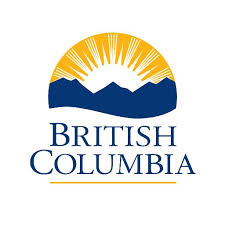terrain inventory mapping
Type of resources
Available actions
Topics
Keywords
Contact for the resource
Provided by
Formats
Representation types
Update frequencies
status
-

SEI_Polygons contains Sensitive Ecosystems Inventory polygons with key and amalgamated (concatenated) attributes derived from the RISC (Resource Inventory Standards Committee) standard attributes. SEI identifies and maps rare and fragile terrestrial ecosystems. Ecosystems mapped may include (but are not limited to) older forests, woodlands, coastal bluffs, herbaceous and sparsely vegetated ecosystems, grasslands, riparian ecosystems and wetlands. SEI methods include manual air photo interpretation or theming of other Ecosystem Mapping, each supported by selective field checking. This layer is derived from the STE_TEI_ATTRIBUTE_POLYS_SP layer by filtering on the PROJECT_TYPE attribute. Project types include: SEI, TEMSEI, TEMSET, and SEIWHR. Current version: v11 (published on 2024-10-03) Previous versions: v10 (published on 2023-11-14), v9 (published on 2023-03-01), v8 (published on 2016-09-01)
-

Bioterrain (TBT) contains polygons with key and amalgamated (concatenated) attributes derived from the RISC (Resource Inventory Standards Committee) standard attributes. TBT divides the landscape into units using the Terrain Classification System for British Columbia and ecological criteria. Polygon attributes include (but are not limited to) surficial material, surface expression, geomorphological processes, drainage class and aspect. TBT methods include manual air photo interpretation supported by selective field checking. Bioterrain mapping is integral to ecosystem mapping and its derivative products. This layer is derived from the STE_TEI_ATTRIBUTE_POLYS_SP layer by filtering on the PROJECT_TYPE attribute. Project types include: TEM, TEMNSS, TEMPRE, TEMSEI, TEMSET, TEMTSM, TBS, TBT, TEMWHR, TEMSDM, TEMPRW, and TEMSEW. Current version: v11 (published on 2024-10-03) Previous versions: v10 (published on 2023-11-14), v9 (published on 2023-03-01), v8 (published on 2016-09-01)
-

Soil Survey Project Boundaries (soil mapping study areas) contains the soil survey project area and attributes describing each project (project level metadata), plus links to the locations of other data associated with the project (e.g., soil survey reports, polygon datasets, plotfiles, scanned maps, legends). Soil Mapping divides the landscape into units according to soil association, name, type, drainage, parent material, and texture. This layer is derived from the STE_TEI_PROJECT_BOUNDARIES_SP layer by filtering on the PROJECT_TYPE attribute. Project types include: SOIL, TIMSOI, and SOILSW. Current version: v11 (published on 2024-10-03) Previous versions: v10 (published on 2023-11-14), v9 (published on 2023-03-01), v8 (published on 2016-09-01) The Soil Survey dataset contains project boundaries as well as the soil survey polygons which are available in a variety of formats including: 1) via the [Soil Information Finder Tool](http://www2.gov.bc.ca/gov/content/environment/air-land-water/land/soil-information-finder) Mapping App (interactive app), 2) [Soil Survey Spatial data](https://catalogue.data.gov.bc.ca/dataset/soil-survey-spatial-view) with [Soil Name and Layer Files](https://catalogue.data.gov.bc.ca/dataset/soil-name-and-layer-files) (for download or viewing via iMapBC), or as 3) [Soil Mapping Data Packages](http://www.env.gov.bc.ca/esd/distdata/ecosystems/Soil_Data/Soil_Data_Pkgs/) with geodatabase or shape files, and a data dictionary.
-

Terrain Inventory Mapping (TIM) contains polygons with key and amalgamated (concatenated) attributes derived from the RISC (Resource Inventory Standards Committee) standard attributes. TIM is multi-purpose and divides the landscape into units according to surficial material, surface expression and geomorphological process using the Terrain Classification System for British Columbia. Most of the inventory mapping was completed in the 1970s and 1980s on 1 to 50,000 scale base maps using air photo interpretation with selective field checking, and manual transfer and drafting of paper maps. These maps were later digitized and have been converted from IGDS or CAPAMP to ArcInfo to Geodatabase. This layer is derived from the STE_TEI_ATTRIBUTE_POLYS_SP layer by filtering on the PROJECT_TYPE attribute. Project types include: TIM and TIMSOI. Current version: v11 (published on 2024-10-03) Previous versions: v10 (published on 2023-11-14), v9 (published on 2023-03-01), v8 (published on 2016-09-01)
 Arctic SDI catalogue
Arctic SDI catalogue